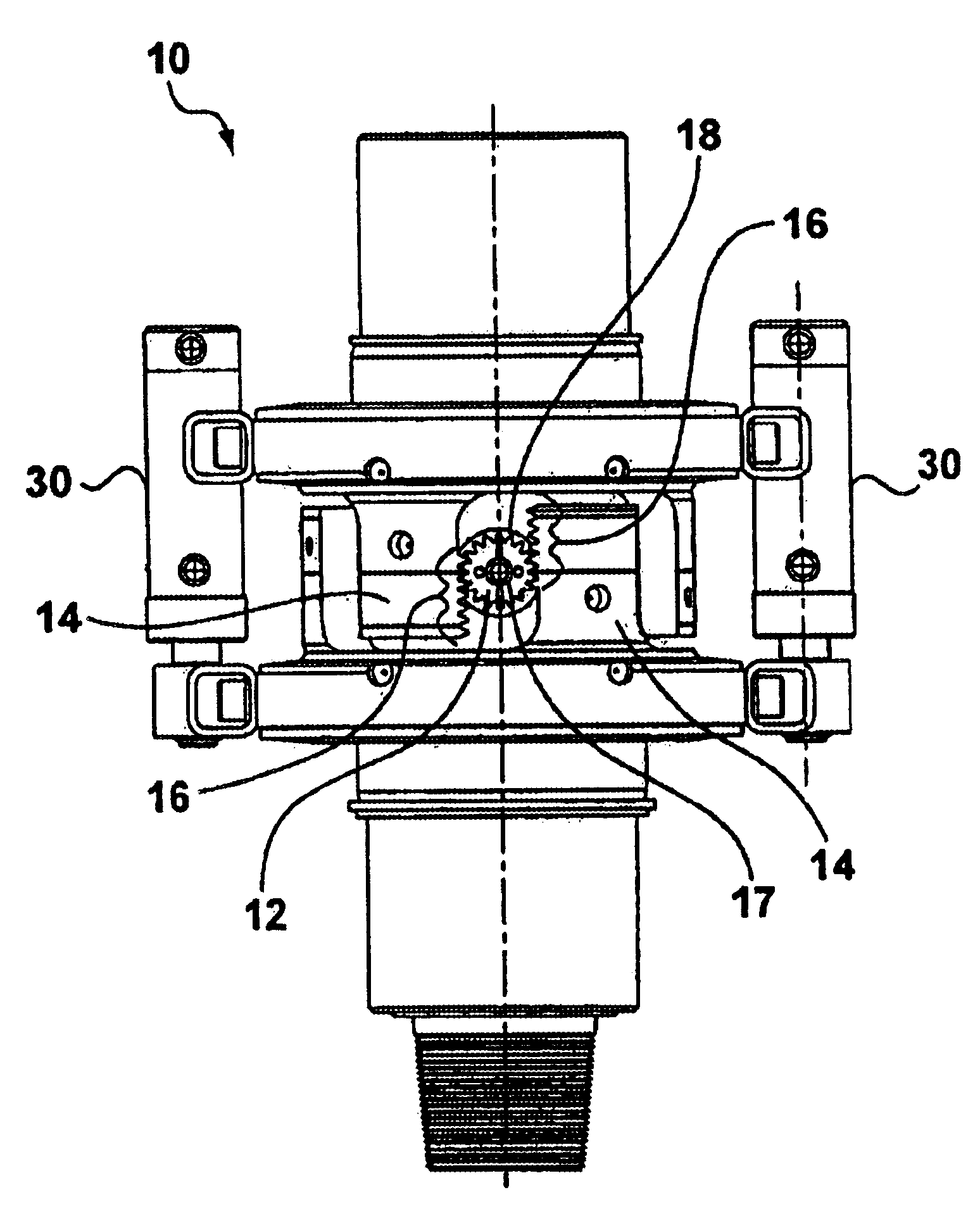Valve actuator
- Summary
- Abstract
- Description
- Claims
- Application Information
AI Technical Summary
Benefits of technology
Problems solved by technology
Method used
Image
Examples
Embodiment Construction
The valve actuator of the present invention is a mechanical actuator that does not include rotary seals. The actuator of the present invention includes a dual crank design, which allows a balanced couple activation to be used to turn the crank of the valve without a side load. The bearings of the valve actuator are enclosed, which protects the bearings from excessive wear and jamming, and the valve actuator may be adapted for use with valves of various manufacturers.
Shown in FIGS. 1A and 1B are side views of the valve actuator of the present invention, which is indicated generally at 10. Valve actuator 10 is coupled around the exterior of valve 11. Valve 11 is generally cylindrical in shape and includes an elongated body 13. To open or close the valve that is located with the housing of valve actuator 10, a hex key (shown in FIG. 4) must be inserted in the hex key holes 12 in each side of the valve actuator 10. By placing a hex key in the hex key hole 12 in each side of valve actuat...
PUM
 Login to View More
Login to View More Abstract
Description
Claims
Application Information
 Login to View More
Login to View More - R&D
- Intellectual Property
- Life Sciences
- Materials
- Tech Scout
- Unparalleled Data Quality
- Higher Quality Content
- 60% Fewer Hallucinations
Browse by: Latest US Patents, China's latest patents, Technical Efficacy Thesaurus, Application Domain, Technology Topic, Popular Technical Reports.
© 2025 PatSnap. All rights reserved.Legal|Privacy policy|Modern Slavery Act Transparency Statement|Sitemap|About US| Contact US: help@patsnap.com



